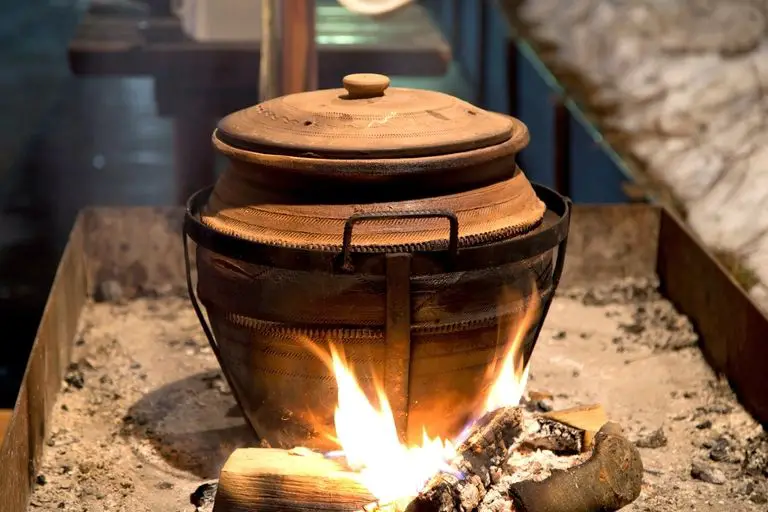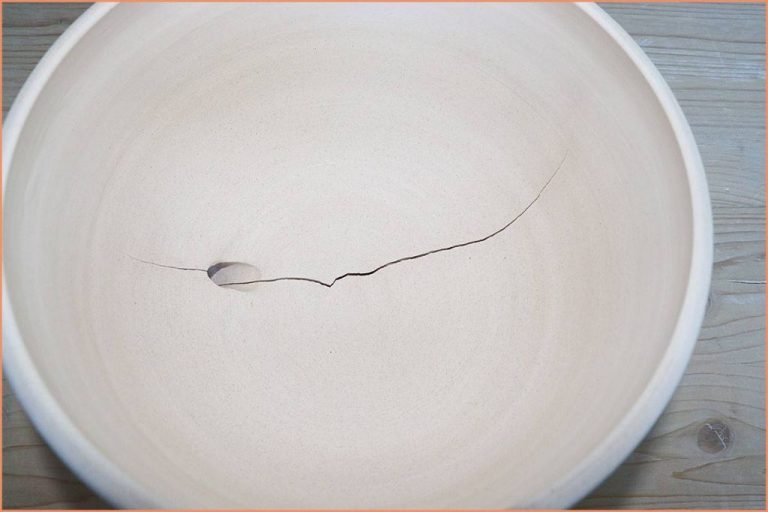Can You Use Clay Bricks For Pizza Oven?
Clay bricks and pizza ovens go hand in hand. For centuries, clay bricks have been used to build traditional wood-fired pizza ovens capable of producing pizzas with the perfect crust. The unique properties of clay bricks, such as heat retention and temperature regulation, make them well-suited for constructing an oven that can reach and maintain the high temperatures needed to quickly cook pizzas to perfection. This article explores whether clay bricks are still a good choice for modern pizza oven builds and provides information on sourcing clay bricks, important design considerations, alternative materials, and maintenance tips. The goal is to empower the reader with the knowledge to decide if clay bricks are the right material for their next DIY pizza oven project or purchase.
Pros of Using Clay Bricks
There are several benefits to using clay bricks in building a pizza oven. Here are some of the main advantages:
Durability
Clay bricks are extremely durable and long-lasting building materials. Unlike other natural stones, properly fired clay bricks will not crack or break down when exposed to heat. This makes them perfect for withstanding the high temperatures inside a pizza oven over many years.
Heat Retention
Clay is an excellent heat retainer. Once clay bricks are heated up inside the pizza oven, they hold that heat very well. This helps the oven stay hot for longer when cooking pizzas back-to-back. The thermal mass provided by the clay bricks allows for more consistent baking.
Aesthetics
Clay bricks have a beautiful rustic, traditional look. Using clay bricks to build your pizza oven allows you to create an elegant, Old World style oven that looks stunning. The rich red hue and textured look of clay brick is very desirable for outdoor kitchens and entertainment areas.
Cons of Using Clay Bricks
While clay bricks offer many benefits for pizza oven construction, there are some downsides to consider as well:
Weight – Clay bricks are much heavier than other building materials like concrete blocks or firebricks. This added weight means you need a very sturdy foundation and structure to support it. It also makes clay brick ovens more difficult to move or relocate.
Slower heat up time – The density of clay bricks means they take longer to heat up to high temperatures. This can mean it takes longer for your oven to preheat fully before you can start cooking pizzas. The thermal mass does retain heat well though.
Higher cost – Clay bricks tend to be more expensive than concrete blocks or other oven construction materials. You’ll need many bricks to build an oven, so the costs add up quickly. This higher material cost may make clay brick ovens impractical for some budgets.
Sourcing Clay Bricks
When building a pizza oven with clay bricks, it’s important to source high-quality bricks made specifically for ovens. Here are some tips on where to buy clay bricks and what to look for:
Where to Buy
Clay bricks can be purchased from brick and masonry suppliers, firebrick retailers, and some larger hardware stores. Buying locally is best to avoid high shipping costs on these heavy materials. Online retailers specializing in wood fired ovens also offer clay bricks, but may have higher prices.
Types of Clay Bricks
The optimal clay bricks for pizza ovens are firebricks or refractory bricks. These are designed to withstand repeated heating and cooling cycles. Fireclay bricks with a rating of at least 2300°F are ideal, as pizza ovens reach temperatures over 700°F. The bricks should have low moisture content and be made of dense clay with sawdust or other fillers. Avoid soft or lightweight bricks that crumble easily.
Standard clay bricks can technically be used, but are not recommended. They are not crafted to handle thermal stress and can crack or explode from moisture trapped inside. Stick to bricks marketed specifically for high heat applications like pizza ovens and fireplaces for best results.
Building Considerations
When building a pizza oven out of clay bricks, there are a few key considerations to keep in mind for proper construction and optimal performance.
Foundation
Having a solid foundation is crucial when building a clay brick pizza oven. The foundation should be made out of concrete or stone to provide a stable, level base. Make sure to build the foundation slightly larger than the base of the oven to provide ample support. The foundation should be at least 4-6 inches thick.
Insulation
Insulating a clay brick oven allows it to retain heat more efficiently. Fiber blanket insulation can be placed between the oven floor and foundation. Vermiculite or perlite insulation is recommended for the oven dome. Good insulation will help the oven hold high temperatures for pizza baking.
Ventilation
Proper ventilation is key for air circulation and regulating temperature. Clay brick pizza ovens should have a chimney to allow smoke and excess heat to escape. The chimney opening size should be around 20-25% of the oven floor area. Vents can also be added to the ceiling to provide additional airflow control.
Clay Brick Alternatives
While clay bricks are a traditional and readily available material for building a pizza oven, there are some alternatives worth considering:
Cordierite
Cordierite is a type of ceramic made from natural raw materials that can withstand very high temperatures. It is commonly used for making pizza stones. Cordierite bricks are lighter than clay bricks and provide excellent thermal shock resistance.
The downsides are that cordierite bricks can be more expensive and need to be ordered from specialty suppliers. The smooth surface also does not absorb as much moisture and flavor like a clay brick oven.
Refractory Cement
Refractory cement is a premixed blend of calcium aluminate cement and aggregates that can withstand temperatures up to 1800°F. It is used to build pizza oven domes from scratch without any bricks.
Using refractory cement allows complete customization of the oven shape and dimensions. It also enables thinner walls than brick for faster heating. However, building a dome from refractory requires forms and proper curing.
Refractory cement can also be used as a mortar for brick ovens to withstand high heat. It provides a strong bond and fills in any cracks or gaps in the brickwork.
Oven Designs
When building a pizza oven from clay bricks, two main designs are the dome oven and barrel vault oven. Each has its own pros and cons to consider.
Dome Oven: The classic dome design resembles a beehive shape and is commonly associated with pizza oven architecture. Dome ovens bake evenly, retain heat well, and the sloped walls help reflect heat back down onto the oven floor. However, dome ovens take more bricks and skill to construct. The height of the dome is an important factor, with a 40-50 cm dome considered optimal for home ovens.
Barrel Vault: Barrel vault ovens have an arched ceiling and straight side walls, creating more of a tunnel shape. They are easier to build than dome ovens but may lose more heat during baking. However, barrel vaults can still perform well when built correctly. The width, length and mouth size are key design considerations for barrel vault ovens.
The size of the oven mouth is also worth considering for either design. Wider mouths make it easier to load and unload pizzas, but a smaller mouth helps retain heat and creates superior airflow within the oven. Mouth widths between 25-35 cm are common for residential pizza ovens.
Heating and Cooking
When it comes to heating and cooking in a clay brick pizza oven, the main considerations are fuel type and temperature regulation.
The most common fuel types used are:
- Wood – Hardwoods like oak, maple and ash work best. You’ll need to start a fire with kindling to get the oven hot.
- Charcoal – Lump charcoal lights easily and burns hotter than briquettes. Chimney starters help get the charcoal ready to use.
- Gas – Propane or natural gas burners can be installed to heat clay brick pizza ovens. Gas gives more temperature control.
Monitoring and regulating the temperature is crucial for proper pizza cooking. A clay brick oven can reach 700-800°F, but ideal cooking temps are in the 500-700°F range. Using a thermometer and adjusting the fire or burners helps maintain the right temp.
The dome shape, thermal mass and airflow of a clay brick oven creates the perfect environment for cooking authentic wood-fired pizza. With the right fuel and temperature regulation, you’ll be making restaurant-quality pizzas at home.
Maintenance
Proper maintenance is essential to keeping your clay brick pizza oven in peak condition. The intense heat of the oven can take its toll over time, so carrying out regular cleaning and minor repairs will extend its lifespan. Here are some tips for maintaining a clay brick pizza oven:
Cleaning
– Allow the oven to fully cool before cleaning. Use a stiff brush to scrub the interior walls and floor to remove food debris and ash. Avoid abrasive cleaners that could scratch the surface.
– Vacuum out ash from the oven floor using a shop vac. The ash tends to cement itself in place over time, so regular cleaning prevents buildup.
– Wipe down the exterior with a damp cloth to remove any splatters or dust. You can use a mild soap and water solution if needed.
– Check the flue and chimney regularly and clean out any buildup of creosote, which is flammable. A chimney brush can dislodge debris.
Repairs
– Inspect the bricks periodically for any cracks or damage. Repair small cracks with high-temperature mortar or caulk. Replace any broken bricks as needed.
– Re-point the mortar joints if they become brittle or cracked. This involves scraping out the old mortar and reapplying fresh mortar.
– Check for damage to the oven door, which can warp from the heat. Oil the hinges regularly to prevent rust. Adjust or replace the door as needed to maintain a tight seal.
With proper care and maintenance, a clay brick pizza oven can provide superb cooking performance for many years. Be sure to clean it regularly, attend to minor repairs promptly, and give it the TLC it deserves.
Conclusion
When building a pizza oven, clay bricks offer some distinct advantages but also have some drawbacks to consider. On the plus side, clay bricks provide excellent insulation, retaining heat effectively once the oven is hot. They are also readily available, durable, and traditional building materials for brick ovens. However, clay bricks can be prone to cracking from thermal stress and are heavy. Sourcing high-quality, fire-resistant bricks is key.
Overall, clay bricks remain a good choice for many pizza oven builds. With careful construction considerations and design choices like incorporating thermal mass, the potential downsides can be minimized. For those wanting a lighter oven or seeking alternative aesthetics, other materials like refractory concrete or firebricks may also work. The ideal materials depends on each builder’s specific goals, constraints and desired outcome. With attention to detail, clay bricks can be a versatile, classic option for constructing a wood-fired pizza oven.



